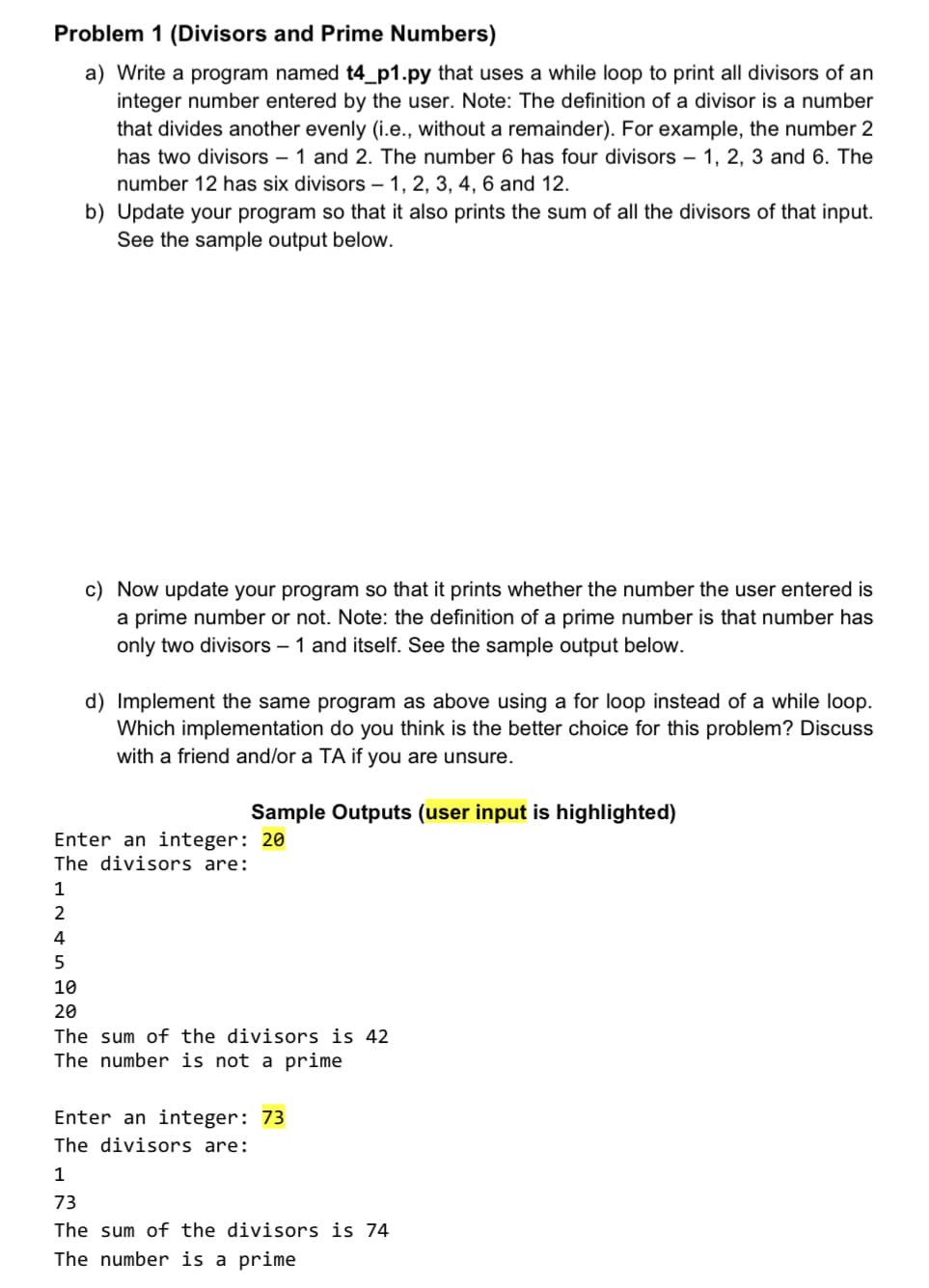Now update your program so that it prints whether the number the user entered is a prime number or not. Note: the definition of a prime number is that number has only two divisors – 1 and itself. See the sample output below. |- Implement the same program as above using a for loop instead of a while loop. Which implementation do you think is the better choice for this problem? Discuss with a friend and/or a TA if you are unsure.
Now update your program so that it prints whether the number the user entered is a prime number or not. Note: the definition of a prime number is that number has only two divisors – 1 and itself. See the sample output below. |- Implement the same program as above using a for loop instead of a while loop. Which implementation do you think is the better choice for this problem? Discuss with a friend and/or a TA if you are unsure.
C++ for Engineers and Scientists
4th Edition
ISBN:9781133187844
Author:Bronson, Gary J.
Publisher:Bronson, Gary J.
Chapter5: Repetition Statements
Section5.4: For Loops
Problem 11E
Related questions
Question
Can someone solve this question?

Transcribed Image Text:Problem 1 (Divisors and Prime Numbers)
a) Write a program named t4_p1.py that uses a while loop to print all divisors of an
integer number entered by the user. Note: The definition of a divisor is a number
that divides another evenly (i.e., without a remainder). For example, the number 2
has two divisors – 1 and 2. The number 6 has four divisors – 1, 2, 3 and 6. The
number 12 has six divisors – 1, 2, 3, 4, 6 and 12.
b) Update your program so that it also prints the sum of all the divisors of that input.
See the sample output below.
c) Now update your program so that it prints whether the number the user entered is
a prime number or not. Note: the definition of a prime number is that number has
only two divisors – 1 and itself. See the sample output below.
d) Implement the same program as above using a for loop instead of a while loop.
Which implementation do you think is the better choice for this problem? Discuss
with a friend and/or a TA if you are unsure.
Sample Outputs (user input is highlighted)
Enter an integer: 20
The divisors are:
1
2
4
10
20
The sum of the divisors is 42
The number is not a prime
Enter an integer: 73
The divisors are:
1
73
The sum of the divisors is 74
The number is a prime
Expert Solution
This question has been solved!
Explore an expertly crafted, step-by-step solution for a thorough understanding of key concepts.
Step by step
Solved in 4 steps with 2 images

Knowledge Booster
Learn more about
Need a deep-dive on the concept behind this application? Look no further. Learn more about this topic, computer-science and related others by exploring similar questions and additional content below.Recommended textbooks for you

C++ for Engineers and Scientists
Computer Science
ISBN:
9781133187844
Author:
Bronson, Gary J.
Publisher:
Course Technology Ptr

C++ Programming: From Problem Analysis to Program…
Computer Science
ISBN:
9781337102087
Author:
D. S. Malik
Publisher:
Cengage Learning

C++ for Engineers and Scientists
Computer Science
ISBN:
9781133187844
Author:
Bronson, Gary J.
Publisher:
Course Technology Ptr

C++ Programming: From Problem Analysis to Program…
Computer Science
ISBN:
9781337102087
Author:
D. S. Malik
Publisher:
Cengage Learning